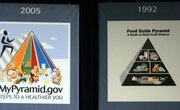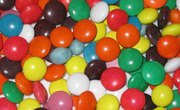Diagrams are visual representations of what things are and how they work, and they have an extraordinary value in the classroom. Many children learn by being able to touch and see something, which means that diagrams help them internalize the information they're learning and apply it to what they already know. There are numerous ways to bring diagrams into the classroom, and teaching children how they work will have a positive impact on their understanding and retention of classroom material.
Venn Diagrams
Step 1
Show students how to draw one circle on the left side of a piece of paper. Then show them how to draw another circle on the right side of the paper, intersecting the two in the center of the paper.
Step 2
Tell students that the intersecting circles represent the similarities and differences between two things.
Step 3
Choose two items to compare and contrast. Select items that are age and grade-appropriate and that focus on something the students have been learning in the classroom. For example, compare and contrast the desert and the arctic or items that sink and items that float.
Step 4
Ask students to share ways that the items are different, and have them write these in the areas of the left and right hand circles that don't intersect with each other. For example, if the students are comparing the desert and the arctic, they would write things like hot weather and little rain on the left side and snowy weather and lots of precipitation on the right side.
Step 5
Instruct students to fill in the area of the circles that intersect with the similarities between the two. For example, for desert and arctic, students will write things such as barren landscape.
Parts of a Whole Diagrams
Step 1
Give students a picture of an item that has several parts, such as a picture of a flower or the human body.
Step 2
Tell the students that labeling a picture helps them learn about the different parts that make up a whole. For example, remind students that without a stem, a flower wouldn't survive.
Step 3
Ask the students to label each part of the picture you've given them. Use the picture as a way to determine what students already know, or use it as an end of the unit assessment to determine if they've learned what you wanted them to.
Math Diagrams
Step 1
Assign students to make diagrams to explain math concepts you're covering in the classroom.
Step 2
Make bar graphs to show the results of a survey the students conducted or to show how many sunny, windy, cloudy and rainy days that have occurred over the past month.
Step 3
Construct pie charts to show the breakdown of certain things, such as how much time students spend on certain activities each day. The sections of the pie will show things like how much time students spend in math class, doing homework, playing sports or watching television.
Related Articles
References
Writer Bio
Sara Ipatenco has taught writing, health and nutrition. She started writing in 2007 and has been published in Teaching Tolerance magazine. Ipatenco holds a bachelor's degree and a master's degree in education, both from the University of Denver.











